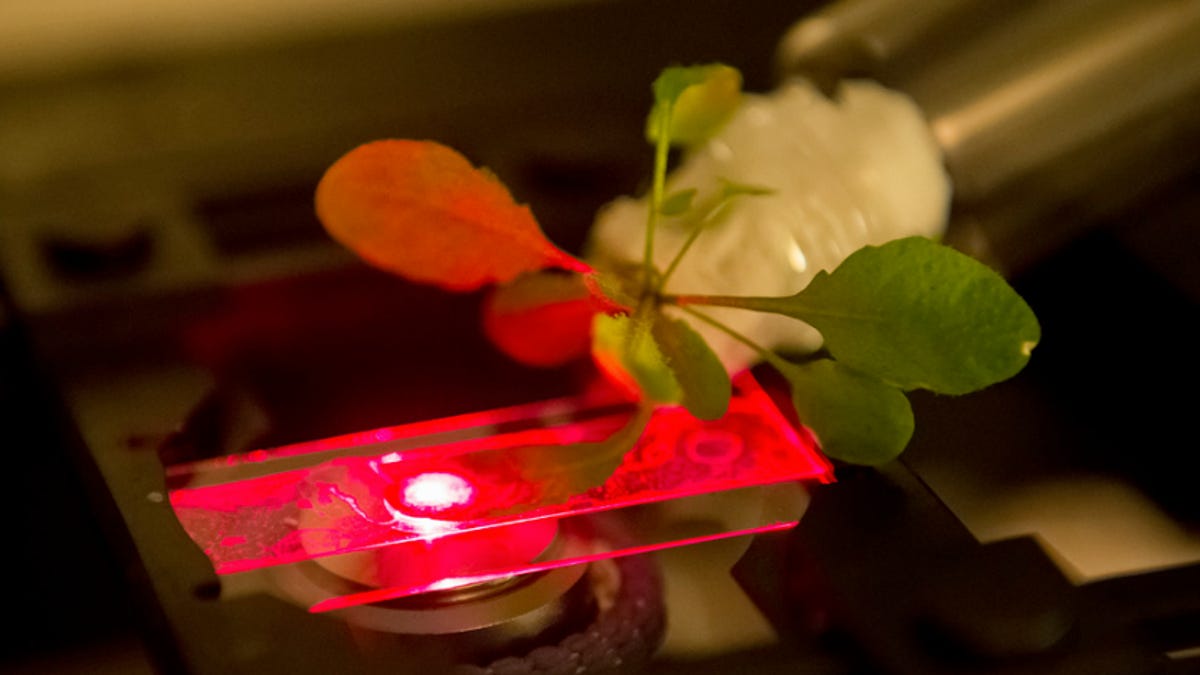Could bionic plants save our lives one day?
Cybernetic Venus flytrap anyone? MIT researchers create plants that are part machine, all awesome, and could one day even be turned into living gas detectors.

Bionics, such as this device invented to replace the functionality and feeling of a man's hand lost in an accident, are steadily finding their way into human lives. Thanks to new research conducted at MIT, such devices may soon be infiltrating the plant world as well -- leading to plants that could monitor their surroundings, communicate via cell phone signals, act as living streetlamps, and create more robust crops.
To engineer their bionic plants, the researchers applied a solution containing carbon nanotubes to the underside of the leaves on a Arabidopsis thaliana plant. The plant sucked up the tubes through its leaves using a process known as vascular infusion, incorporating them into its chloroplasts, the structures responsible for photosynthesis. The researchers found that the energy subsequently produced by the plant increased 30 percent, as measured by the amount of electrons that got flowing during the photosynthetic process.
In addition to the plant getting a boost in energy production, the researchers believe the nanotubes could act as a kind of micro antenna. In such a capacity, the tubes would allow plants to soak up certain wavelengths of light they can't currently use, such as ultraviolet, green, and near-infrared.
The scientists published their findings on "plant nanobionics" Sunday in the journal Nature Materials.
Michael Strano, an MIT professor of chemical engineering and leader of the research team, told Crave that "increasing photosynthesis within plants and chloroplasts is the first step to enhancing plant growth, increasing crop yields, etcetera. Growth is a complex process with many rate-limiting steps, potentially. But there is merit to helping the plant capture more light, especially if our vision is to use some of this energy to do other exotic functions."
Strano and research partner Juan Pablo Giraldo, a plant biologist, have already incorporated one such "exotic function" -- plants that can communicate with humans, and not just to tell us when they need to be watered via Twitter, or or phone calls. These plants could actually help save our lives one day.
Send us a sign, leaf Strano and Giraldo injected a plant with carbon nanotubes that could sense nitric oxide, a pollutant caused by combustion, in effect turning it into a living gas detector. According to Strano, when the plant senses gas, "the nanoengineered leaf emits a near-infrared light signal, like in a TV remote control, that can be read by an external detector. This type of scheme can be used for stand-off detection from the plant, with say a camera or imaging array."
"We could someday use these carbon nanotubes to make sensors that detect in real time, at the single-particle level, free radicals or signaling molecules that are at very low-concentration and difficult to detect," Giraldo added in a statement. Just imagine if all those plants at the airport were doing double duty as sensors for toxic airborne particles, or if your potted ficus started glowing if there was a gas leak in your home.
Next up for the researchers? "We are also interested in bionic versions of self actuating plants -- like the Venus flytrap," Strano told Crave.
Uh-oh. Bionic Venus flytraps? I want in on the movie rights. Who's with me?

